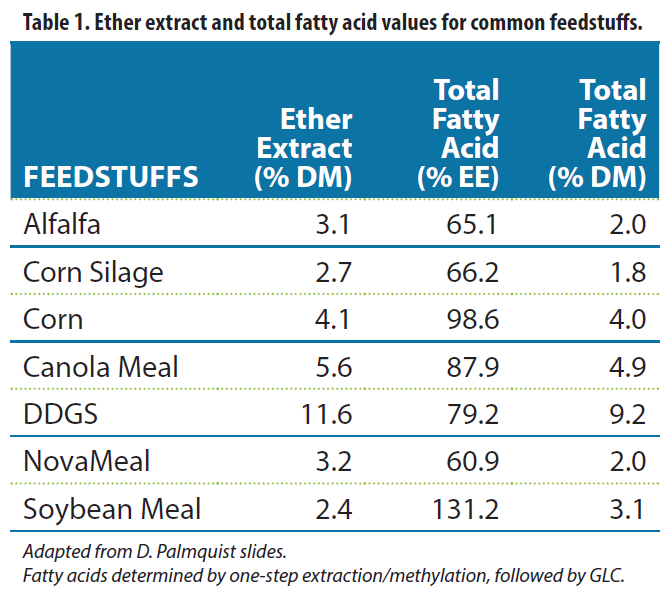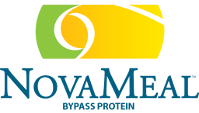Lab Procedures for Protein
& Fat Analysis of Feeds
Due to the fine particle size of NovaMeal it is important to use the following
lab procedures to accurately evaluate protein and fat in the sample:
1. For the protein evaluation Novita recommends using a “Rumen and Intestinal Digestibility Assay of Protein by Freeze Drying (Multi-Step Protein Evaluation)”. This is a modified procedure of D. A. Ross and M. E. Van Amburgh; Rumen undegradable protein is determined on material recovered by freeze drying. Cumberland Valley Analytical Services has the test procedure available.
2. To determine the level of fat in the diet request a total fatty acid (TFA) test. Ether Extract is not a good measure of fat in the sample as differences in particle size overstate the fat measurement and include pigments, esters, aldehydes and waxes. A TFA test will provide a more accurate result for TFA as well as unsaturated fatty acids. Most labs are able to provide TFA using chromatography (i.e., GLC or HPLC).”
FAT ANALYSIS OF FEEDS
The total fat content in feeds is usually measured via ether extraction. Essentially, the feed is mixed with a solvent, the fat is extracted from the feed, and the total amount of crude fat is measured. Historically, the solvent used has been ether. Other solvents (i.e., petroleum ether or hexane) are used for specific feeds. Ether extract has the benefit of being economical, and as such it is often used for routine analysis of feeds. However, other compounds (pigments, esters, aldehydes, and waxes) can also be solubilized and included in the ether extract (EE) value.
Analysis of total fatty acid (TFA) can be conducted, which will eliminate the potential contamination of non-fatty acid sources. Essentially, each individual fatty acid is measured using chromatography (i.e., GLC or HPLC). The results of the analysis include the TFA, as well as the fatty acid profi le. TFA is the actual amount of fat measured without the additional non-fat compounds. In addition, the fatty acid profile allows the determination of the amount of unsaturated fat that are present in the feed.
The table shows common feedstuffs and their corresponding values for ether extract and total fatty acid. In most cases, the ether extract value is greater than the total fatty acid value (the exception in the table below is soybean meal).
NovaMeal has an EE = 3.2% DM and TFA ≤ 2.0% DM. Petroleum ether is recommended as the solvent for extraction with limited grinding (maximum of 1mm). The composition of the TFA is 80% unsaturated fatty acids with linoleic fatty acid (C18:2) being the predominant fatty acid.
WATCH THIS VIDEO featuring Dr. Tom Jenkins for more insight on the topic of feed fat analysis.
The total fat content in feeds is usually measured via ether extraction. Essentially, the feed is mixed with a solvent, the fat is extracted from the feed, and the total amount of crude fat is measured. Historically, the solvent used has been ether. Other solvents (i.e., petroleum ether or hexane) are used for specific feeds. Ether extract has the benefit of being economical, and as such it is often used for routine analysis of feeds. However, other compounds (pigments, esters, aldehydes, and waxes) can also be solubilized and included in the ether extract (EE) value.
Analysis of total fatty acid (TFA) can be conducted, which will eliminate the potential contamination of non-fatty acid sources. Essentially, each individual fatty acid is measured using chromatography (i.e., GLC or HPLC). The results of the analysis include the TFA, as well as the fatty acid profi le. TFA is the actual amount of fat measured without the additional non-fat compounds. In addition, the fatty acid profile allows the determination of the amount of unsaturated fat that are present in the feed.
The table shows common feedstuffs and their corresponding values for ether extract and total fatty acid. In most cases, the ether extract value is greater than the total fatty acid value (the exception in the table below is soybean meal).
NovaMeal has an EE = 3.2% DM and TFA ≤ 2.0% DM. Petroleum ether is recommended as the solvent for extraction with limited grinding (maximum of 1mm). The composition of the TFA is 80% unsaturated fatty acids with linoleic fatty acid (C18:2) being the predominant fatty acid.
WATCH THIS VIDEO featuring Dr. Tom Jenkins for more insight on the topic of feed fat analysis.


